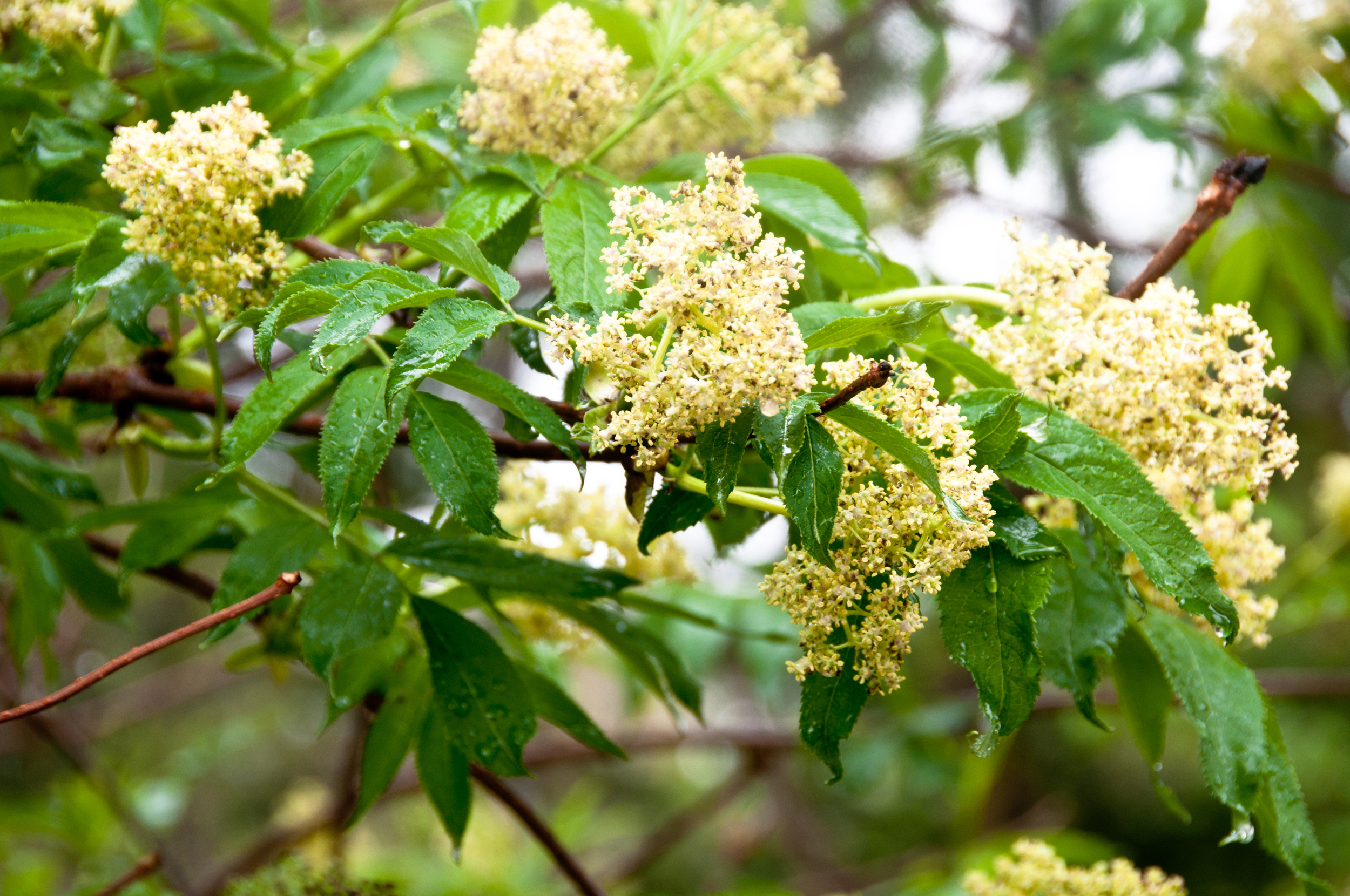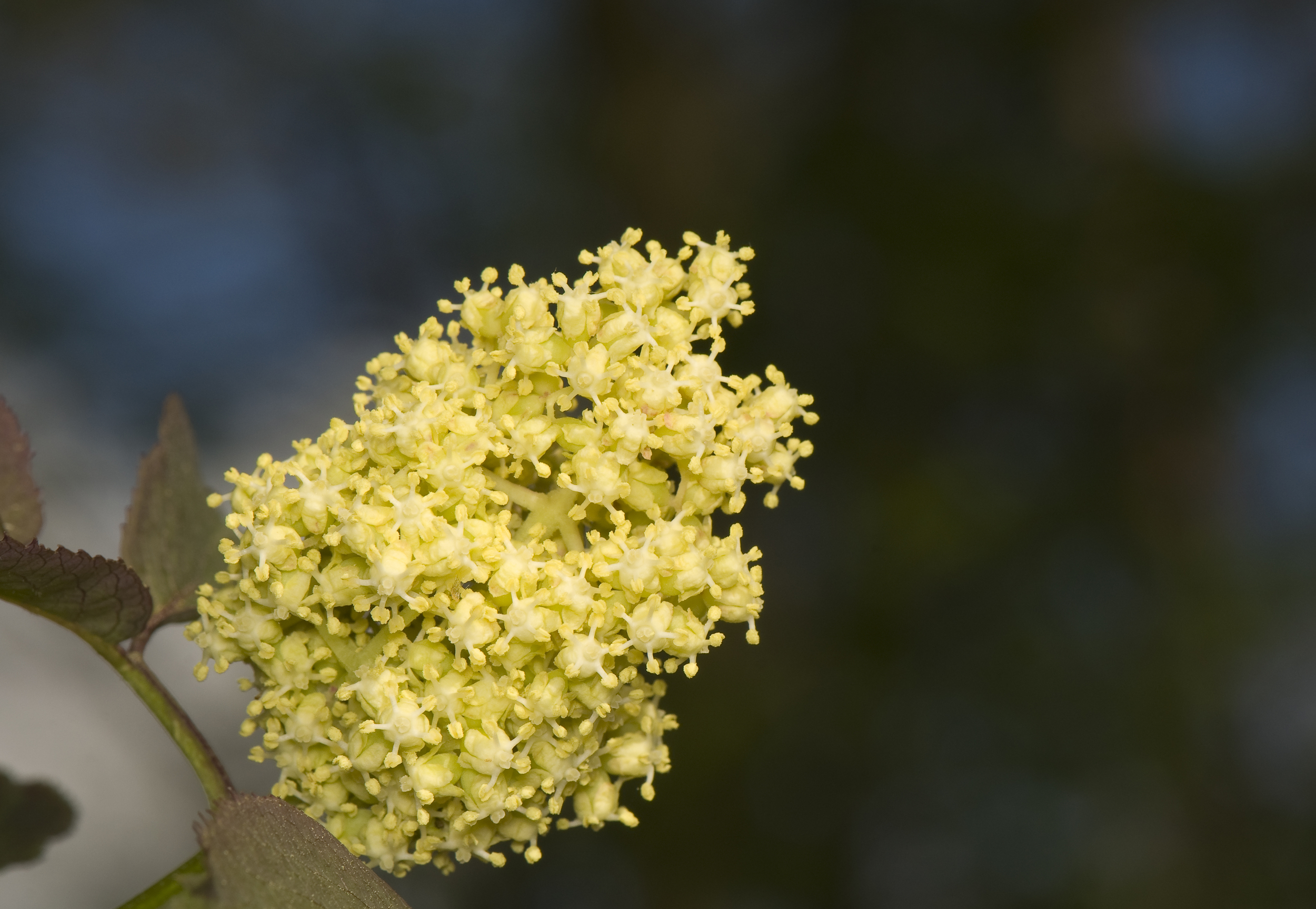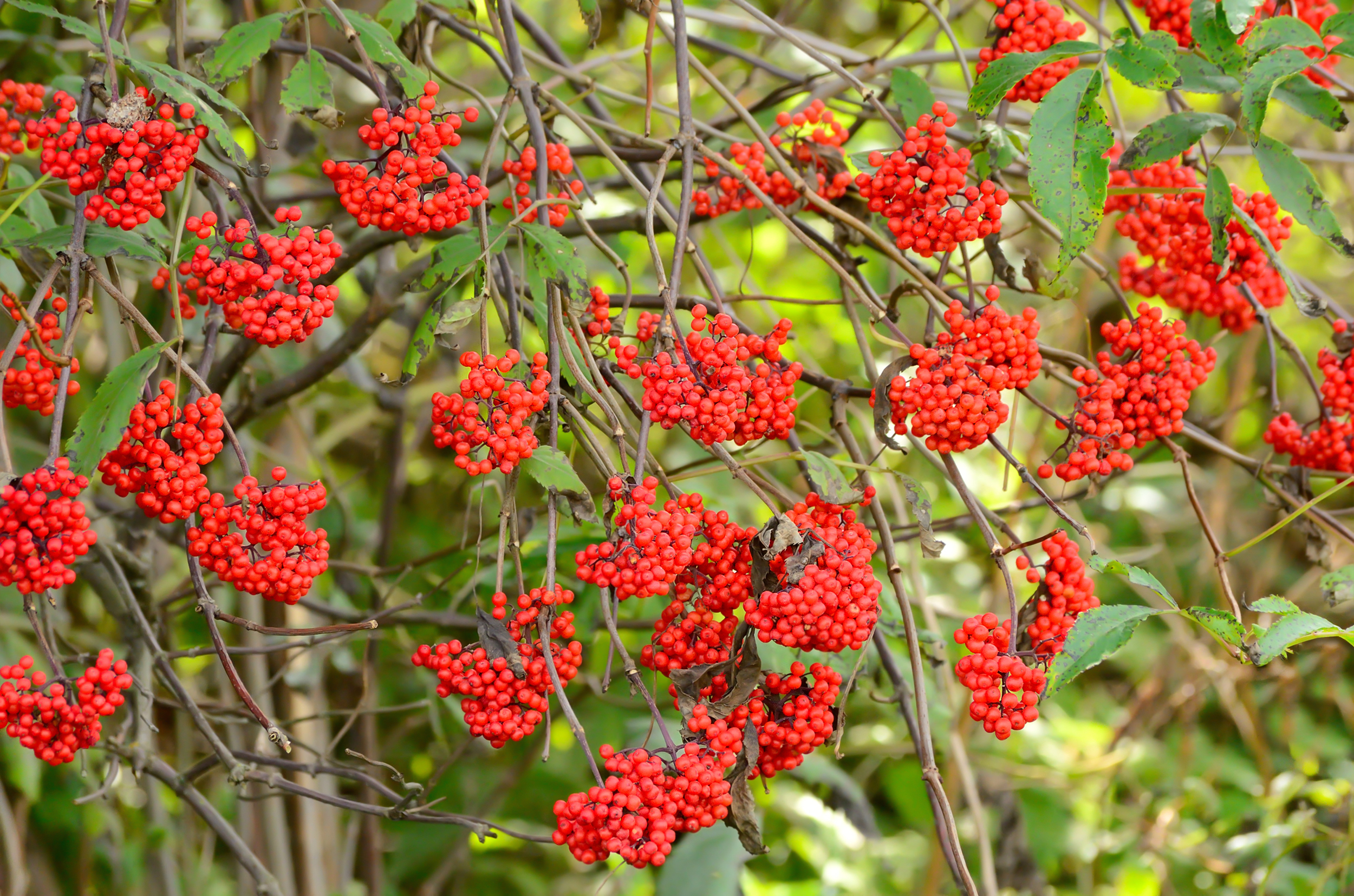Sambucus racemosa (Red elderberry)
Deciduous aromatic shrub or small tree up to 20 ft. tall with bright red berries and creamy white flowers, blooming April to September. Occurs on well-drained deep, loamy nutrient rich soils along streambanks, ravines, swamps, moist forest openings and upland sites near wetlands; up to 12,000 ft. elevation. Common throughout its range, often occurring within conifer and alder communities. Densely rhizomatous pioneer, good for erosion control on moist sites. Sprouts from crown and rhizomes after disturbance and wildfire; some populations lack rhizomes. May be tolerant of heavy metal contaminated soils on mining and smelting sites. Provides cover and nesting for wildlife and berries feed numerous birds and small mammals. Palatability to livestock and wildlife varies due to the natural cyanide content of individual plants. Intolerant of heavy browsing. Native cavity nesting bees live inside the pithy stems of old dried growth. Hummingbirds forage flower nectar.
DISTRIBUTION / ADAPTATION
INFORMATION & ATTRIBUTES
Family: Caprifoliaceae
Duration: Perennial
Growth Habit: Shrub/tree
Native Status: Native
Growth Form: Multiple stem
Mature Height: 10-20 ft.
Bloom Color: White
Fruit/Seed Color: Red/black
Bloom Period: Spring
Annual Precipitation: 10-60 in.
Drought Tolerance:
Shade Tolerance: Intermediate
Elevation: up to 9,500 ft.
Wetland Indicator Status: FACU
Fire Resistance: No
Fire Tolerance: Medium
Nitrogen Fixation: None
SOIL ADAPTATION
Coarse Texture: Yes
Medium Texture: Yes
Fine Texture: No
Salinity Tolerance: None
CaCO3 Tolerance: Medium
pH Range: 5.0-8.0
SEEDING NOTES
Seeds per Pound: 286,000
Seeding Rate: PLS lbs/acre
Season: Fall
Days to Germination:
VARIETIES & LOCAL ACCESSIONS
None




